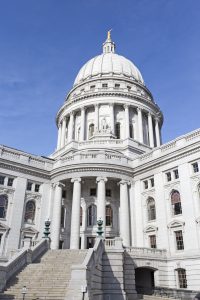
A new report released today by the non-partisan Legislative Fiscal Bureau (LFB) projects Wisconsin’s closing, net general fund balance at the end of the current biennium (June 30, 2023) to be just over $3.8 billion. This is slightly more than $2.88 billion above the net balance that was projected last July when the 2021-23 biennial budget was signed into law. The $3.8 billion balance is in addition to the $1.7 billion the state currently holds in its “rainy day” fund, known officially as the budget stabilization fund.
The $2.88 billion increase is the net result of:
-
-
-
-
-
- an increase of $2.51 billion in estimated tax collections;
- an increase of $33.1 million in departmental revenues (non-tax receipts deposited into the state’s general fund); and
- a decrease of $339.4 million in net appropriations.
-
-
-
-
In a separate, somewhat technical memo, the LFB also provided new information about Wisconsin’s compliance with federal requirements for K-12 maintenance of effort and maintenance of equity under the federal coronavirus acts, based on the updated revenue and expenditure projections released today.
The memo suggests that based on the new projections, the state may be able to increase its general fund expenditures in the current 2021-22 fiscal year by as much as $387 million and still meet the maintenance of effort requirement. In other words, it could increase its overall spending by $387 million between now and June 30, 2022, without having to spend any additional dollars on K-12 education or higher education. That is largely because projected expenditures, as noted above, are $339.4 million below what was forecasted when the maintenance of effort numbers were originally calculated. However, the state may have to increase its spending on K-12 education in the 2022-23 fiscal year by at least $5 million in order to meet with maintenance of effort requirement. If authorized spending levels increase in the upcoming year, that $5 million figure could grow in proportion to the additional spending.
The memo also suggests that one Wisconsin school district would fall about $70,000 under the maintenance of equity requirement in the American Rescue Plan Act (ARPA). Nevertheless, because the decrease in controlled expenditures in that districts is the result of the operation of the revenue limit formula and not specific legislative action, the LFB anticipates that the state will be found to be in compliance with the maintenance of equity requirement.
You can view the memo here.
